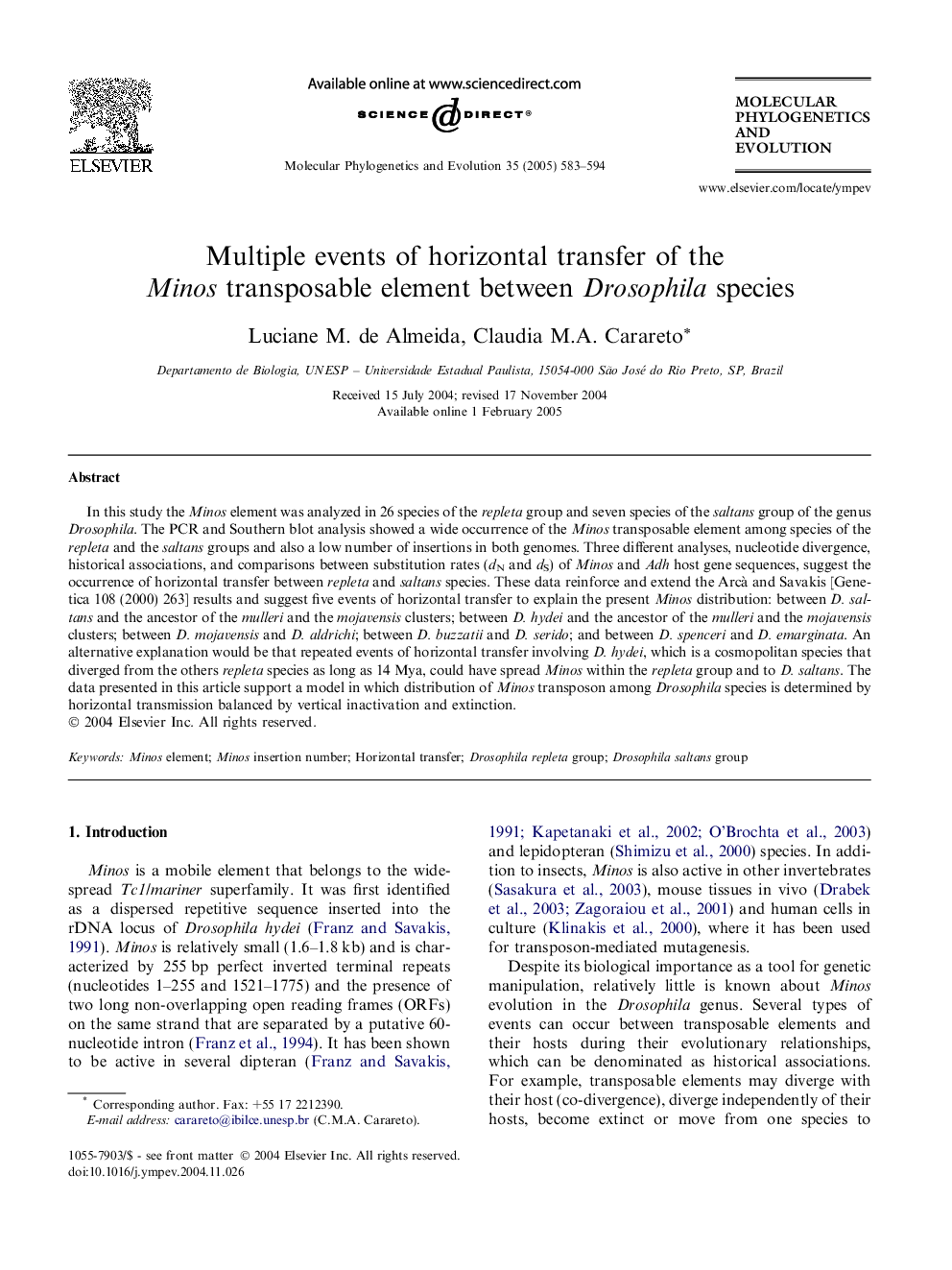| Article ID | Journal | Published Year | Pages | File Type |
|---|---|---|---|---|
| 9143126 | Molecular Phylogenetics and Evolution | 2005 | 12 Pages |
Abstract
In this study the Minos element was analyzed in 26 species of the repleta group and seven species of the saltans group of the genus Drosophila. The PCR and Southern blot analysis showed a wide occurrence of the Minos transposable element among species of the repleta and the saltans groups and also a low number of insertions in both genomes. Three different analyses, nucleotide divergence, historical associations, and comparisons between substitution rates (dN and dS) of Minos and Adh host gene sequences, suggest the occurrence of horizontal transfer between repleta and saltans species. These data reinforce and extend the Arcà and Savakis [Genetica 108 (2000) 263] results and suggest five events of horizontal transfer to explain the present Minos distribution: between D. saltans and the ancestor of the mulleri and the mojavensis clusters; between D. hydei and the ancestor of the mulleri and the mojavensis clusters; between D. mojavensis and D. aldrichi; between D. buzzatii and D. serido; and between D. spenceri and D. emarginata. An alternative explanation would be that repeated events of horizontal transfer involving D. hydei, which is a cosmopolitan species that diverged from the others repleta species as long as 14 Mya, could have spread Minos within the repleta group and to D. saltans. The data presented in this article support a model in which distribution of Minos transposon among Drosophila species is determined by horizontal transmission balanced by vertical inactivation and extinction.
Keywords
Related Topics
Life Sciences
Agricultural and Biological Sciences
Ecology, Evolution, Behavior and Systematics
Authors
Luciane M. de Almeida, Claudia M.A. Carareto,
